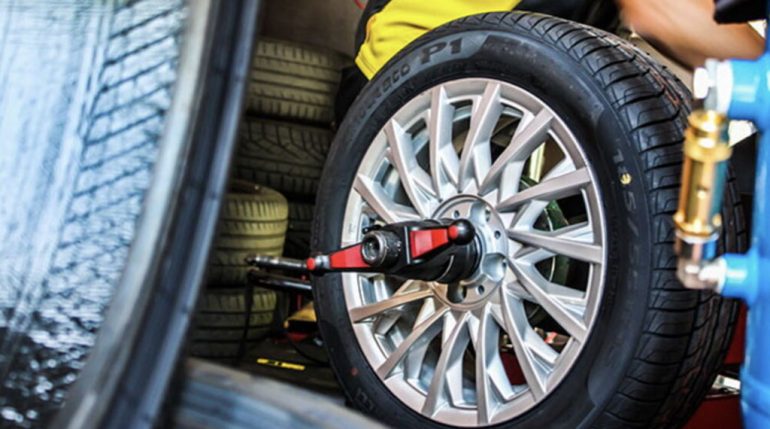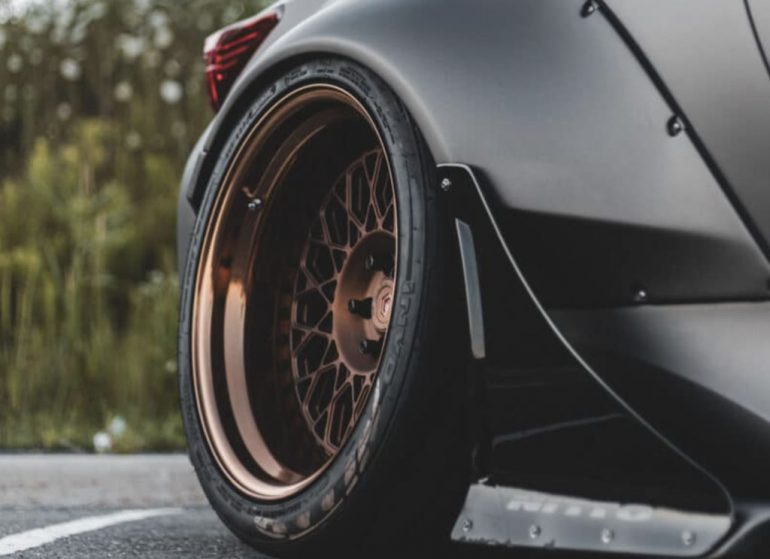
Even if your car is brimming with thousands of horsepower under the bonnet, without a decent set of wheels and matching tires, you won’t be going anywhere. Alloys are often the first mod any self-respecting car enthusiast does, and there are a few good reasons for that. They’ll be much lighter than what came with the car, more durable, significantly increase ride quality and handling, and to boot also look much better. They can also be sized just the way you want when adding good, low-profile rubber. These in turn increase grip and braking performance both on and off the track.
When pairing decent alloy wheels and tires, there are quite a few things to think about. Differences in materials used, how the alloys are made, sizing and the overall look and finish mean there are hundreds of types (and brands) to choose from if you know what you’re looking for.
As for tires, different compounds and tread designs work better in different seasons and for different uses, and specifics like load and speed ratings determine which option fits which vehicle. So quite a lot to take in. Let’s remove any quandaries so you can make an informed buying decision, starting with alloys.
Made from aluminium or magnesium and trace metals, performance alloy wheels are more durable than comparable steel offerings. There’s more effort and time put into production processes resulting in wheels that endure being kerbed and run through potholes at speed.
The added strength also translates to better handling and cornering and wheels that can handle the weight of the vehicle and the heightened stresses. Drivers get a more direct steering feel, so the car negotiates abrupt changes in direction easier. With a lower “unsprung” mass there’s also less weight to push around, so alloys additionally help with acceleration. Other things of note, are the less damaging effect on tires and suspension parts, the comfier ride, and improvements in fuel use.
Alloys are also easier on brake components, allowing better heat dissipation. Heat can compromise braking performance and lead to severe issues like brake fade, or excessive vibrations that also impact safety. Moreover, larger wheels additionally mean more space for bigger rotors, callipers and pads, and here bigger is better.
Besides coming in designs that turn heads, alloys should also be an extension of yourself. Spoke numbers vary, from 3 to 36, but 5,6 and 7-spoke varieties either in single or double-spoke designs are the most common. Others come in mesh, grid or teledial patterns and look good on older sports cars.
You’ll also be looking at different finishes to bring out the best in your purchase. Subdued power and paint-coated wheels in darker colours go well with newer car designs, while chrome-plated and polished wheels hark back to the early days of performance cars. Alloys are weather resistant (unlike steel) and any coating provides an additional layer of protection.
There are two flavours to choose from. High-grade 6061 T6 aluminium has exceptional strength, weighs a third of steel in the same size, and is ductile and malleable so easily formed in the desired shape. Trace materials add hardness and impact resistance, so these are a good choice for less-than-perfect British roads.

If you have more cash to spend, go with Magnesium. Alloys in this material are even lighter than aluminium and ideal for lower fuel use, fare better against heat (to a degree, as they are flammable) and more forgiving on brakes, have less wear in more spirited driving and are more durable and therefore provide improved overall handling. Get these if you’re after some serious track work.
The toughness of alloys depends on how they are created. A low-cost manufacturing method called casting involves pouring molten metal into a mould to give the wheel the required shape. The wheel needs to be machined, and extra metal must be removed after the metal has cooled. This provides reasonable strength but typically results in something that is a little bit heavier.
A similar technique is flow-forming, which involves spinning a pre-cast wheel on a mandrel while applying pressure and heat to it. The procedure causes the metal to be compressed and stretched, hence boosting its tensile strength. Here, less material is employed, making the wheels lighter without sacrificing strength compared to cast ones.
Monoblocs or forged alloys have the highest strength as they are made from a single piece of metal formed using immense pressure and heat and then rolled in a similar flow-forming process, machined of excess material, and blasted to remove stubborn remnants. You get a good-looking and light wheel, with the production process offering the most flexibility in terms of designs, and one that won’t succumb under heavier loads.
There are three major factors to consider when determining sizes and getting the right fit for your car. Wheel manufacturers offer options in common sizes, such as 16, 17, 18, and 20 inches, and buyers can usually go with slightly bigger alloys. This means more tyre choices and a cleaner and neater look to the wheel arches and the car as a whole.

Pitch circle diameter, or PCD, refers to the fictitious breadth or diameter that runs through the centre of the wheel studs, bolt holes, rim holes, or bolt pattern, and is mainly concerned with proper fitment. With the typical 4- and 5-stud configurations, this is typically between 100 and 120mm, but there are also unique alternatives for other hubs.
The distance between the centerline of the wheel and the hub’s mounting surface is known as offset, or ET. The majority of performance cars have them positive or shifted to the street side, however certain 4WDs and SUVs have them negatively.
To get the most out of your new wheels, you’ll need matching tires. Putting all that power down on the road is done by a performance tyre, and this will directly impact grip, traction, acceleration, top speed, and handling in different weather conditions and on different road surfaces. You’ll also want something that stops the vehicle in the shortest possible distance, dampens road imperfections, exhibits low wear, and doesn’t get noisy. This is a lot to ask from rubber, right? Thankfully, manufacturers have put in all the work so drivers can choose what best suits their needs.
If you’re intent on swapping out both the alloy wheels and tires in one go, look for deals that can save you quite a bit of cash. Choosing the right tires though also requires some research. Besides making the obvious distinction between summer, winter and all-season options (as a jack-of-all-trades, but the master of none), you’ll know what different tread patterns do, the difference between soft and hard compounds and how tires and different parts like side walls are reinforced for optimal strength. It’s these details that win and lose races.
Summer tires are much firmer than their winter counterparts and have a harder compound, with a less prominent thread, and this means better performance in both wet and dry conditions but at warmer temperatures. There’s better braking, more responsiveness, lower rolling resistance and more grip as the tyre heats up on longer journeys or at higher speeds.
Winter tires are meant for driving in colder conditions, as they have a softer compound which provides the needed grip on colder surfaces. These though wear out faster and can’t achieve the performance characteristics of dedicated summer tires. For ice and snow though, there’s nothing better.
Choose your next set of front and rear tires in the corresponding size and in the right load and speed ratings. Both are marked on the side walls. For instance, a common 205 55 R16 95V tyre means it has an overall width of 205 mm and a height of 55mm and that it is a radial design, (with plies running from one bead to the other at right angles to both beads). It fits a 16-inch rim, has a load rating of 690 kilos when fully inflated and can be used at a speed of up to 140 mph.
Load ratings range from 265 (62) to 1700 kilos (126) and speed ratings are stated in letters from A to Y. Options with Y speed ratings are rated for 230 mph.

Automotive Addicts Contributors are a collective of guest writers, industry professionals, and passionate enthusiasts who bring fresh perspectives to the Automotive Addicts platform. Focused on delivering timely news, in-depth reviews, and unique insights, these contributors help keep the site dynamic and engaging. Many use the platform to expand their reach and build credibility within the automotive media world, adding depth and variety to the content that drives the Automotive Addicts community.